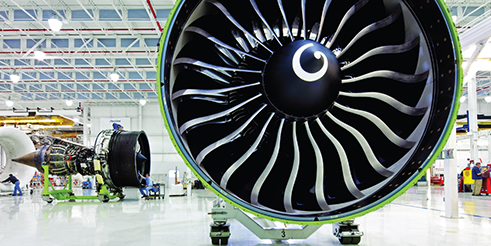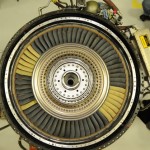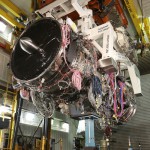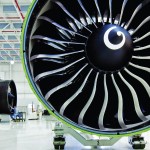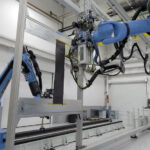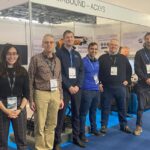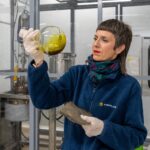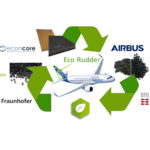GE Tests Rotating Ceramic Composite Material for Fighter Jet Engine
GE Aviation successfully tested the world’s first non-static set of light-weight, ceramic matrix composite (CMC) parts by running rotating low-pressure turbine blades in a F414 turbofan demonstrator engine designed to further validate the heat-resistant material for high-stress operation in GE’s next-generation Adaptive Engine Technology Demonstrator (AETD) program currently in development with the United States Air Force Research Lab (AFRL).
The introduction of rotating CMC components into the hottest and hardest-working sections of jet engines represents a significant technology breakthrough for GE and the jet propulsion industry. Prior to the F414 CMC demonstrator, successful CMC applications were limited to static parts, like the high pressure turbine shroud that will be installed on the best-selling LEAP engine, by CFM International, a joint company of GE and Snecma (SAFRAN) of France, in development for the Airbus 320neo, Boeing 737 MAX and the COMAC (CHINA) C919 aircraft.
The F414 CMC test — which endured 500 grueling cycles – validated the unprecedented temperature and durability capabilities of turbine blades made from lightweight, heat-resistant CMCs, allowing for expansive deployment of the advanced manufacturing material in GE’s adaptive cycle combat engine and next-gen commercial engines.
Because the rotating turbine blades made from CMCs are one-third the weight of conventional nickel alloys used in the high-stress turbine, they allow GE to reduce the size and weight of the metal disks to which the CMCs system is connected. “Going from nickel alloys to rotating ceramics inside the engine is the really big jump. But this is pure mechanics,” said Jonathan Blank, general manager of CMC and advanced polymer matrix composite research at GE Aviation. “The lighter blades generate smaller centrifugal force, which means that you can slim down the disk, bearings and other parts. CMCs allow for a revolutionary change in jet engine design.”
GE’s adaptive cycle architecture – the first in which static and rotating CMCs will be deployed — is revolutionary in its own right. In 2014, GE completed testing the world’s only adaptive three-stream technology demonstrator, called the Adaptive Versatile Engine Technology (ADVENT) engine. The ADVENT engine is the first in aviation history to combine the CMC material technology with an architecture that transitions from a powerful high-pressure, low-bypass ratio fighter jet engine to a fuel-efficient low-pressure, high-bypass ratio commercial engine.
The combination of ADVENT’s revolutionary architectural and material innovations resulted in record-breaking temperature and fuel burn achievements. GE’s AETD program will build on these unprecedented propulsion capabilities to deliver a 25% reduction in specific fuel consumption, 30+ % improvement in range and 10% higher maximum thrust compared to today’s most advanced fifth-generation aircraft.
“One of the key challenges in transitioning CMC to rotating components from static components is the stress field in which they must live. The progression of F414 CMC testing has provided key learnings in making this transition happen for our adaptive cycle engine,” said Dan McCormick, general manager of GE Aviation’s Advanced Combat Engine program. “The CMC low-pressure turbine blade is about one-third the weight of the metal blade it replaces, and at the second stage, the CMC doesn’t have to be air-cooled. The airfoil can now be more aerodynamically efficient because it does not need all that cooling air pumping through the middle of it.”
“More heat means more cooling air, which reduces overall engine performance and efficiency,” Blank said. “By reducing the need for cooling components, our engine becomes aerodynamically more efficient and also more fuel efficient.”
GE’s adaptive cycle engine will be much more durable than conventional engines because the CMC’s material temperature capability is hundreds of degrees higher than legacy nickel-based alloys currently in service in both commercial and military engines.
Since it began developing the technology in the early 1990s, GE Aviation has invested more than $1 billion in CMCs, which are made of silicon carbide ceramic fibers and ceramic resin, manufactured by GE facilities in Delaware and North Carolina through a highly sophisticated process and further enhanced with proprietary coatings.
GE’s small-scale CMC production facility in Newark, Delaware, built the turbine components for the F414 test. GE’s mass production facility in Asheville, North Carolina, will produce static parts for the LEAP engine.
Photo’s captation: CMC’s blade turbine


